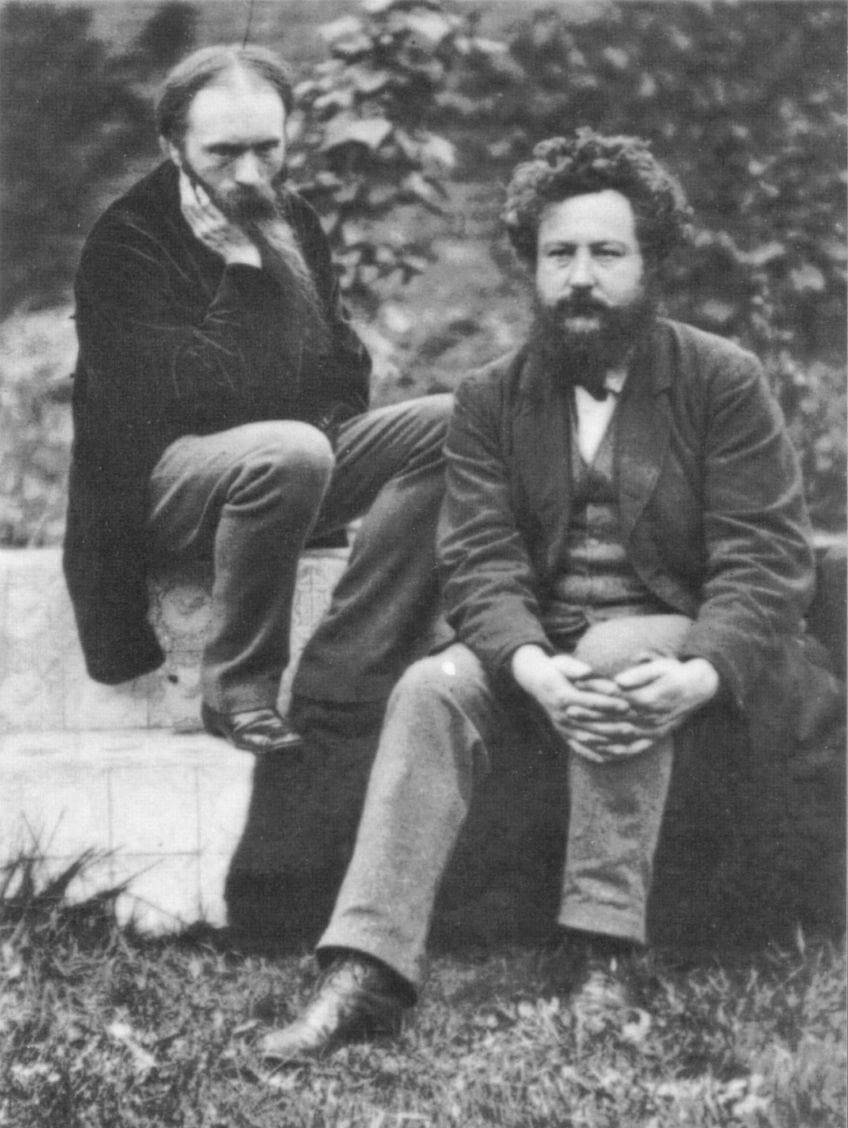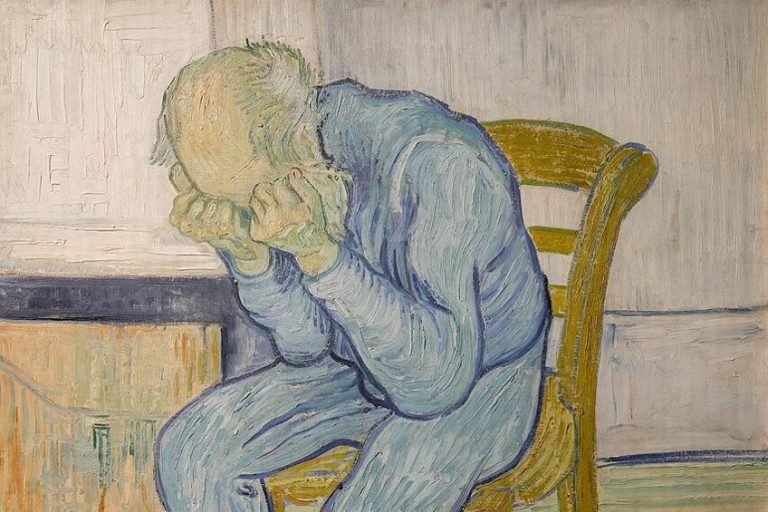William Morris – The King of Pattern and Textile Design
William Morris was a prolific artist, designer, and writer who played a significant role in the British Arts and Crafts Movement of the 19th century. Born in 1834, Morris became renowned for his intricate textile designs, wallpaper patterns, and furniture creations, all infused with a deep appreciation for nature and a revival of medieval craftsmanship. His artistic vision extended beyond aesthetics, as he championed social reform, advocating for the preservation of traditional craft techniques and the improvement of working conditions for artisans. Through his iconic designs and philosophical contributions, Morris left an indelible mark on the world of art, design, and social activism.
Table of Contents
Key Takeaways
- William Morris was a multifaceted artist who played a key role in the British Arts and Crafts Movement.
- His designs and writings heavily influenced both the aesthetics and ideology of the Victorian era.
- Morris’s impact endures in modern design and his ideas continue to resonate in contemporary social discussions.
Early Life and Education
| Birth | March 24, 1834 |
| Death | October 3, 1896 |
| Place of Birth | Walthamstow, London, United Kingdom |
| Genre of Work | Textile designer and poet |
William Morris was a visionary figure of the 19th century, whose work extended across an array of creative disciplines, leaving a lasting mark on art and design. Morris excelled as a textile designer, poet, artist, and writer, becoming notably recognized for his substantial contributions to the British Arts and Crafts Movement. His devotion to creating high-quality, handcrafted goods spurred a resurgence of traditional British textile arts and methods of production, countering the effects of industrialization with a focus on craftsmanship and design.

As an early socialist, Morris held strong political views which permeated his diverse body of work. His contributions to furniture, fabrics, stained glass, and wallpaper design not only transformed Victorian taste but also embodied his ideology that art should be a social good, accessible to all. Beyond his artistic endeavors, Morris was an influential literary figure, whose works in poetry and publishing played a pivotal role in the cultural conversations of his time. His legacy today touches many facets of modern design, art, and politics, with his principles still inspiring contemporary discussions around craftsmanship, sustainability, and social responsibility.
Family and Childhood in Walthamstow
William Morris was born on March 24, 1834, in Walthamstow, then a village to the northeast of London. He was the third child in a wealthy middle-class family, with his father being a financier and his mother coming from an affluent family in Worcester.
Tragically, his older siblings passed away in infancy, making him effectively the eldest.
Oxford University Years
In 1852, Morris began his studies at Exeter College in Oxford. His time at the college was pivotal; he became part of the Oxford Union and forged significant friendships, including with the artist Edward Burne-Jones. His initial intention was to join the clergy, but his experiences at Oxford steered him toward a career in the arts.

Influences of John Ruskin and Charles Kingsley
During his university years, Morris was profoundly influenced by the writings of John Ruskin and Charles Kingsley. Ruskin’s advocacy for the value of craftsmanship in the face of industrialization and Kingsley’s social ideals became integral to Morris’s philosophy.
These thinkers helped fuel Morris’s passion for both social reform and the aesthetics of design.
Artistic Career and Collaborations
William Morris was a seminal figure in the decorative arts, known for his exceptional contributions to textile design, furniture, wallpaper, and interior decoration. His artistic career was marked by significant collaborations that fueled the Arts and Crafts Movement and influential designs that remain prominent today.

Formation of Morris, Marshall, Faulkner & Co.
Morris, Marshall, Faulkner & Co., founded in 1861, was the culmination of William Morris’s ambition to create a firm that would revive traditional craftsmanship in reaction to the mass production of the Industrial Revolution.
Alongside Philip Webb, an architect, and several other colleagues, they established a company that became renowned for its production of stained glass, furniture, and textile designs.
Partnership With Edward Burne-Jones and Dante Gabriel Rossetti
William Morris’s collaboration with Edward Burne-Jones and Dante Gabriel Rossetti was instrumental in the development of his decorative style. They worked closely on stained glass and tapestry designs. Burne-Jones’ artistic skills were a perfect complement to Morris’s vision, while Rossetti contributed to the richness and complexity of their collaborative works.

Pre-Raphaelite Circle and Influences
The association with the Pre-Raphaelite Brotherhood, a group that aimed to return to the detail, intense colours, and complex compositions of Quattrocento Italian art, deeply influenced Morris’s work.
The circle’s emphasis on beautifully crafted works aligned with Morris’s ideals, and this collaboration significantly shaped the aesthetic direction of Morris & Co.
Interior Design and Decorative Art
Morris’s approach to interior design revolutionized the decorative arts. Red House, Morris’s residence designed by Philip Webb, served as a showcase for Morris’s furniture and decorative designs. His wallpapers and fabrics, featuring intricate floral and medieval motifs, were distinguished for their craftsmanship and became synonyms with the Arts and Crafts Movement.

Literary Works and Publishing
William Morris’s substantial impact on literature is evident in his dual roles as a noted English writer and a pioneering figure in the revival of printing practices during the Victorian era. William Morris was a prolific poet and writer, crafting works that ranged from epic poems to novels. His collections, such as The Earthly Paradise, a series of narrative poems, were celebrated for their rich language and use of classical and medieval literary themes. Morris’s forays into prose resulted in influential utopian and fantastical writings, including notable works like News from Nowhere and A Dream of John Ball.
These pieces are often heralded for laying the groundwork for modern fantasy literature.
- Epic poems: The Earthly Paradise
- Novels: News from Nowhere, A Dream of John Ball
- Themes: Utopian societies, fantastical landscapes, and historical fiction
Kelmscott Press and Contributions to Printing
In his quest to harmonize content with form, William Morris established the Kelmscott Press in 1891, propelling a renaissance in printing and book design. Morris held a strong passion for high-quality bookmaking and drew inspiration from medieval manuscripts with rich decorations and exquisite typefaces. The Kelmscott Press became synonymous with luxurious limited-edition books, famously producing works such as an ornate edition of Geoffrey Chaucer’s works, which is often considered the magnum opus of the press. Morris’s dedication to craftsmanship and beauty in tangible literature remains influential to this day.

Political Views and Activism
William Morris was a prominent figure in the socialist movement during Victorian Britain. He extended his passion from the arts to engage actively in political thought, founding the Socialist League and challenging the conventions of his time through lecturing and writing. Morris aligned with socialist ideologies in the 1880s after initially embracing the decorative arts. Disillusioned with the inequalities in Victorian society, he joined the Social Democratic Federation (SDF), the first organized socialist group in Britain.
Morris’s associations with socialist groups reflected his belief in communal living and art’s potential to contribute to a better society, reminiscent of medievalism.
Founding of the Socialist League
His experience with the SDF led to ideological differences, prompting Morris to establish the Socialist League in 1885. This organization favored a more revolutionary approach to achieving socialist outcomes. Morris envisioned the Socialist League as a platform for advocating a transformational change to the economic and social structures of society, which he saw as exploitative and unjust.

Lecturing and Political Writings
Morris, as a socialist activist, took to the public stage, delivering lectures across industrial England, notably the Birmingham Set. His speeches and writings argued for the radical restructuring of society. He became a revolutionary socialist activist, and his commitment to socialist ideals was evident in his prolific output, which includes the well-known work, News from Nowhere, illustrating his utopian vision for society.
His political views were a call to action for democratic reform and underpinned his holistic view of design, society, and the environment.
Legacy of William Morris Today
The influence of William Morris, the father of the Arts and Crafts movement, is enduring and palpable in contemporary design and aesthetics. His vision encompassed not only a distinctive creative style but also a philosophy that art should be accessible to all, rejecting the norms of industrial mass production.

Design and Crafts
Morris’s legacy is evident in the persistent popularity of his patterns and designs. Modern-day interiors often feature wallpapers and textiles mimicking his intricate floral prints, emphasizing the continued relevance of his work.
Philosophical Impact
Morris’s societal ideals are reflected in today’s environmental and sustainable design principles. They align with the anti-consumerist movements that critique mass production and advocate for the longevity and quality of crafted objects.
Morris’s pedagogical impact is seen in art and design education, which stresses the importance of craftsmanship and the value of functional, beautiful objects.
Literature and Fantasy Genre
In literature, Morris contributed significantly to the development of the modern fantasy genre. His narrative works continue to influence writers and are appreciated for their imaginative scope and language.
Preservation and Advocacy
Contemporary artistic societies draw inspiration from Morris’s ethos of preservation, advocating for the protection of historical craft techniques and the environment. In sum, Morris’s ideals and artistic contributions have transcended his own era, continuing to shape the fields of design, literature, and social activism. His belief in beauty, quality, and social equity resonates with modern-day sentiments, confirming his role as a trailblazer whose legacy remains significant today.

William Morris’s legacy endures as a visionary figure whose artistic brilliance transcended mere aesthetics. His dedication to craftsmanship, advocacy for social reform, and revival of traditional techniques continue to inspire artists, designers, and activists alike. Morris’s timeless designs and profound philosophical contributions not only shaped the Arts and Crafts Movement but also left an enduring impact on the intersection of art, design, and social change. His legacy serves as a testament to the timeless power of art to transcend boundaries and inspire positive transformation in society.
Frequently Asked Questions
What Are Some Notable Creations by William Morris?
William Morris was renowned for his beautifully intricate wallpaper designs, textiles, and furnishings that revolutionized Victorian interior decoration. He was also a prolific writer, producing works such as The Earthly Paradise and translations of classic Icelandic and ancient epic poems.
What Is the Significance of William Morris Wallpapers in Art History?
Morris’s wallpapers are celebrated for their intricate patterns and nature-inspired motifs. With a dedication to craftsmanship and detail, these designs have endured as a symbol of the Arts and Crafts movement and represent a pivotal moment in the departure from industrial mass-produced art to a return to traditional handcrafted methods.
How Did William Morris Contribute to the Arts and Crafts Movement?
Morris was a key figure in the Arts and Crafts movement, emphasizing the importance of craftsmanship in reaction to the industrialization of the 19th century. He championed hand-made products, the use of high-quality materials, and the integration of design with fine art, influencing generations of designers and artisans.
Isabella studied at the University of Cape Town in South Africa and graduated with a Bachelor of Arts majoring in English Literature & Language and Psychology. Throughout her undergraduate years, she took Art History as an additional subject and absolutely loved it. Building on from her art history knowledge that began in high school, art has always been a particular area of fascination for her. From learning about artworks previously unknown to her, or sharpening her existing understanding of specific works, the ability to continue learning within this interesting sphere excites her greatly.
Her focal points of interest in art history encompass profiling specific artists and art movements, as it is these areas where she is able to really dig deep into the rich narrative of the art world. Additionally, she particularly enjoys exploring the different artistic styles of the 20th century, as well as the important impact that female artists have had on the development of art history.
Learn more about Isabella Meyer and the Art in Context Team.
Cite this Article
Isabella, Meyer, “William Morris – The King of Pattern and Textile Design.” Art in Context. May 20, 2024. URL: https://artincontext.org/william-morris/
Meyer, I. (2024, 20 May). William Morris – The King of Pattern and Textile Design. Art in Context. https://artincontext.org/william-morris/
Meyer, Isabella. “William Morris – The King of Pattern and Textile Design.” Art in Context, May 20, 2024. https://artincontext.org/william-morris/.











